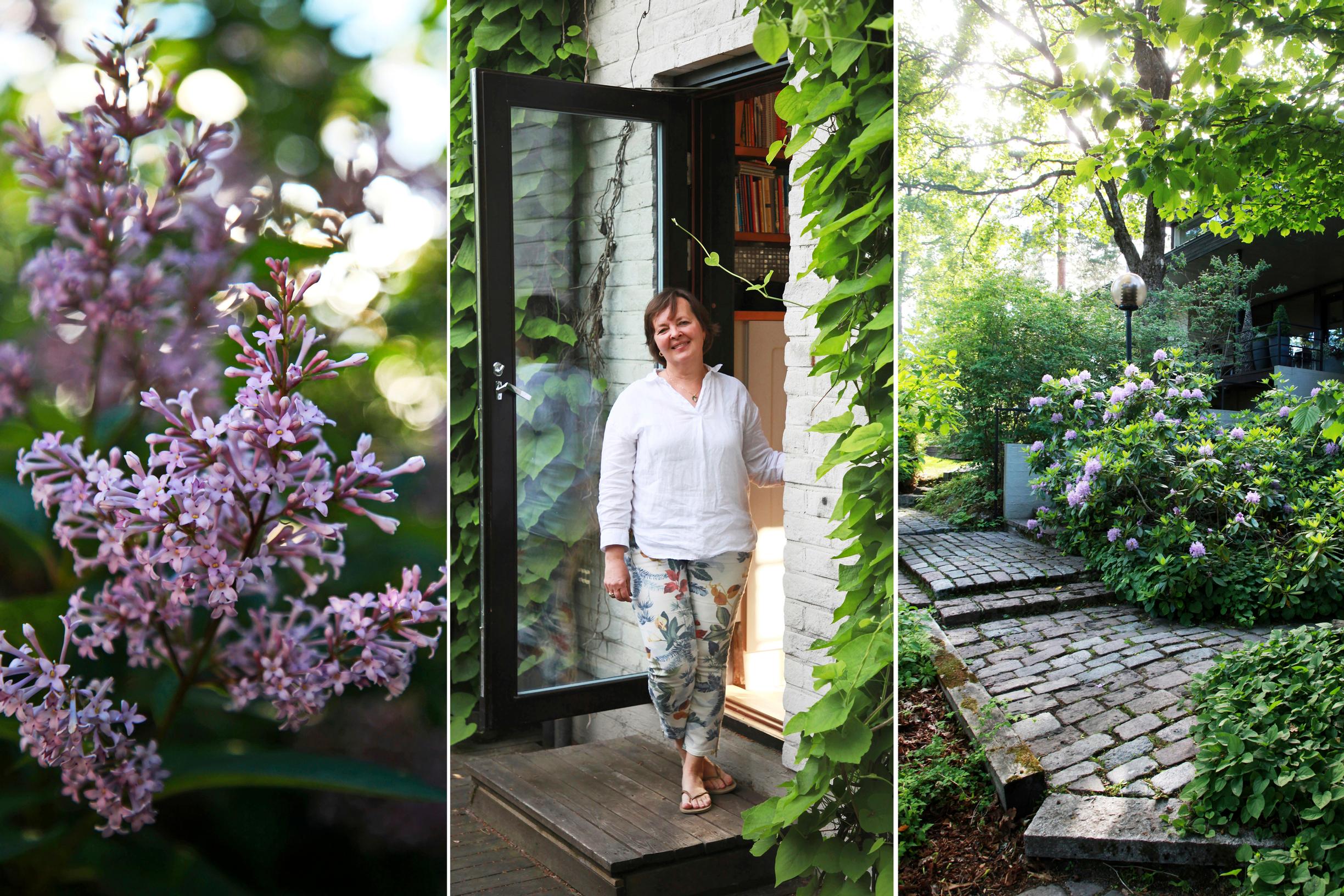
Landscape designer restored a 70s garden, honoring the original plan: “I hope this place lives, grows, and flourishes for future generations too”
Landscape designer Maria Koskenvesa from Espoo has subtly refreshed the 1970s ambiance and plantings of her garden. In the renovation, it was important to her to honor the original plan crafted by the renowned landscape architect Maj-Lis Rosenbröijer.
Beneath majestic oaks, nestled among the greenery, stands a stylish 1970s detached house. Its modernist and clean-lined ambiance fits perfectly within the verdant surroundings. The large windows are like landscape paintings, bringing the garden indoors. Large rhododendrons and Hungarian lilacs border the building, while climbing hydrangea and Dutchman’s pipe, showcasing their sturdy trunks, drape over the brick walls.
The lush vegetation has seen the passing of decades, yet the garden still exudes the clarity and harmony typical of 1970s gardens—a subtle and understated beauty.
Landscape designer and horticulturist Maria Koskenvesa and her partner Anssi Koskenvesa have owned this Espoo garden since 1992. Maria shares that the house was designed by architect Ilkka Tavio, and the original garden plan is the work of the late legendary landscape architect Maj-Lis Rosenbröijer.
“We originally fell in love with the house’s architecture and the atmosphere of the garden, even though the garden was overgrown,” Maria says.
In early summer, when the rhododendrons and lilacs bloom like this, the garden gets a touch of purple hues. At other times, you’re embraced by lush greenery in various shades.
What: Maria’s garden in Espoo
Size: 1,500 m²
Soil: Sandy moraine and garden soil
Special features: A 1970s garden where the original plan by Maj-Lis Rosenbröijer has been preserved




For Maria and Anssi, it has been important to cherish the garden’s unique atmosphere. They have renovated it with respect for the original plan, while stylishly and subtly updating it for the present.
“We have kept the original cobblestone paving on the pathways and even managed to acquire more when someone dismantled and sold similar stones from their garden. We replaced the concrete slabs in the backyard with a modern wooden terrace, as it felt like a cozy solution and made it feel more like a living space.”
Maria and Anssi have not wanted to change the garden’s original vegetation, but when necessary, they have restored and rejuvenated it by pruning and trimming.
“Among the original species, we’ve added some of our own choices,” Maria mentions.
For example, in the shady areas of the garden, Maria has planted asarabacca and pachysandra as a dense green ground cover. Both plants were also used by Rosenbröijer in her time.




The most significant change Maria has made is to the hedge running along one side of the garden, separating two houses. Previously, common hawthorn grew there, but it had become badly dilapidated. Maria chose European hornbeam to replace it, having admired hedges made from it in Sweden and Denmark. Although there was no guarantee the leafy shrub would thrive in Espoo, Maria wanted to try it. She specially ordered seedlings from a familiar garden store, as the species was not yet sold anywhere in Finland at that time.
“European hornbeam is a wonderful hedge plant but rarely used here. It develops beautiful green leaves early in spring, and in fall they turn a magnificent copper hue. Dry, brown leaves adorn the hedge almost all winter. The shrub is leafless for only about a week or two,” Maria explains.
Maria’s experiment has been encouraging. Not one of the seedlings in the hedge has suffered damage since being planted in 2015. Deer, city rabbits, and hares have also left them alone.
“I greatly enjoy getting my hands dirty with soil and seeing growth that is something bigger than myself. The garden existed before me and will remain after me. I hope this place lives, grows, and flourishes for future generations too. I’m just a part of the garden’s timeline.”






